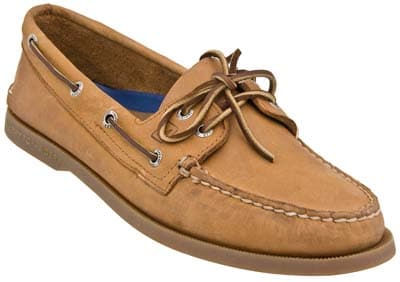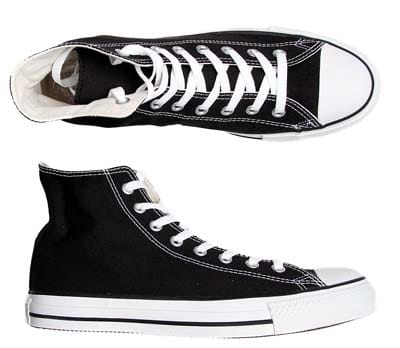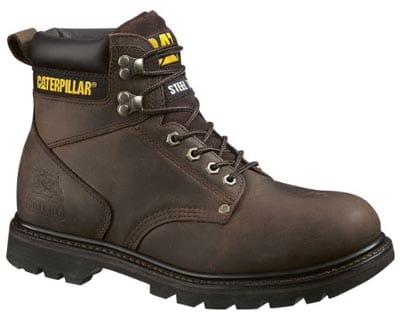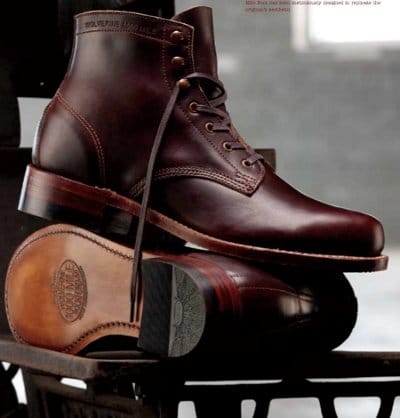Men’s Footwear Type Overview by BROTHERS STANDARD COLLECTION
Dress Shoes
Oxfords are lace-up shoes built to be worn below a man’s ankle. They are commonly divided into balmorals and bluchers due to the difference in their lacing systems. Balmorals are commonly referred to simply as “oxfords,” while bluchers are referred to as derbys but rarely oxfords; all of this leads to confusion naturally. So for simplicity’s sake, I will refer to balmorals as balmoral oxfords and bluchers as bluchers.Balmoral oxfords use a closed lacing system and are normally styled more simply than bluchers. Thus balmoral oxfords are classified as the dressier of the two; they are best worn with suits and formal wear. I advise every man to own a classic pair of balmoral oxfords to wear with his 2-piece suit.

Classic English Made Oxford Balmoral
Slip-ons are not oxfords as they do not use laces; by design they are less formal although if conservatively styled they can and have been worn with suits. However, they are generally more at home with grey flannel trousers and a sport jacket. Moccasins, monk straps, and tassel loafers are just a few of the more popular options available. Many of the styles you’ll find in the slip-on category could have been classified below as casual footwear; this just highlights the fact that there are very few hard lines when dividing items like this. I personally love slip-ons, as they make travel so much easier when you have to go through 6 metal detectors over a 24 hour period.
For a more in-depth overview of men’s dress shoes click here, and for a chart overview of men’s dress shoes click here.
Casual Footwear
Saddle Shoes – A casual oxford shoe, the saddle shoe is distinctive because it utilizes a layer of leather over the instep that is normally a different color than the rest of the shoe, thus classifying it as a casual but stylish choice. Leather Laced – Heavy Sole – The
two most well known shoes in this category are Dr. Martens and
Sketchers. Ranging from $40 to $200, these shoes vary in their build
quality but are consistently casual in nature due to their large rubber
soles and overall heavy appearance. Relying on glue and being
manufactured with shoddy materials (Dr. Martens moved the production of
most of their shoes and boots to China several years ago), these shoes
fill a niche but are not long term value pieces and are best avoided by a
man looking to build a serious wardrobe. I would say their one
redeeming quality is their ability to withstand poor weather conditions,
but if that’s your goal, then you should consider a quality pair of
boots.
Leather Laced – Heavy Sole – The
two most well known shoes in this category are Dr. Martens and
Sketchers. Ranging from $40 to $200, these shoes vary in their build
quality but are consistently casual in nature due to their large rubber
soles and overall heavy appearance. Relying on glue and being
manufactured with shoddy materials (Dr. Martens moved the production of
most of their shoes and boots to China several years ago), these shoes
fill a niche but are not long term value pieces and are best avoided by a
man looking to build a serious wardrobe. I would say their one
redeeming quality is their ability to withstand poor weather conditions,
but if that’s your goal, then you should consider a quality pair of
boots.Canvas Shoes – Sneakers come in a wide variety of styles and colors, however the rules of wearing them outside of the gym are universal. When clean and situation appropriate, they work well with chinos, jeans, and shorts.

Converse – what more is there to say about this classic sneaker.
 Sandals
– One of man’s earliest forms of footwear, sandals continue to serve as
a solid choice for protecting the bottom of our feet while allowing
maximum air circulation to the upper portion.
Sandals
– One of man’s earliest forms of footwear, sandals continue to serve as
a solid choice for protecting the bottom of our feet while allowing
maximum air circulation to the upper portion.Clogs, Flip Flops, and Crocs – I was told that if you can’t say something nice, don’t say anything at all. So I am silent.
Athletic Shoes
Running shoes, basketball shoes, tennis shoes–you would think the occasions for which these were meant to be worn would be clear. Yet we persist in wearing our white running shoes everywhere, declaring it a right because they are comfortable. I counter this argument by saying that many of us are too lazy to take the time to think outside the box and select a casual shoe that looks sharp and is comfortable. They definitely exist.Boots
Work Boots – There’s a cobbler I use in Green Bay whose shelves are lined with two types of footwear. High end dress shoes that need to be conditioned and shined, and work boots that have gone through a beating and need new soles. Like a pick-up truck that works hard and simply needs an oil change and new tires, quality work boots last forever and help you get the job done. Any man that works 14 hour days in construction learns at an early age that spending a bit more for quality boots is an investment in how his body will feel that weekend. And as mentioned before, solidly built work boots can be re-soled, while cheap boots that are made with glue and inferior materials not only fail under heavy usage but cannot be fixed as they were designed to be disposable.
Caterpillar makes an excellent work boot – notice the stitched sole.
Western Boots – Growing up in West Texas, I have a special place in my heart for western boots. Functionally, they serve the purpose of keeping a man in his saddle, protecting him from the terrain, and if taken care of, they can last as long as his horse. But that’s the issue–most of us don’t require this functionality and wrestle with the issue of whether or not we deserve to wear something so idealized by our culture.
Personally I feel a man can pull off western boots without being a cowboy – the key is being comfortable and confident in them. And avoid flashy or brightly colored boots unless they have a special meaning or you crafted them yourself, otherwise you’ll look like a clown.

Lucchese makes an excellent boot. Just make sure to get two of them.
Dress Boots – This includes a wide variety of styles and manufacturers, from Red Wing’s Heritage collection to the classic Chelsea made famous by the Beatles. While many are built to withstand the rigors of hiking and working, they are more often than not worn for their style, not their function.

The Wolverine 1,000 mile boot. Made in the USA in a 300 step process. Brett’s an owner and a big fan.
If you’ve made it this far into the article, I take it you like to read about shoes. So let’s turn it up a notch and briefly discuss the option of bespoke boots and shoes. It’s not for every man, but I feel a discussion on footwear would be incomplete without it.
All shoes used to be custom; mass manufactured footwear that’s comfortable is a modern luxury. Crafted one at a time, a man’s status (much more than today) was determined by what he could afford to wear on his feet. Today the art of hand making footwear rests with a small number of artisans scattered across the globe.
First, when commissioning a pair of bespoke shoes be prepared to pay. Handcrafted shoes are expensive because modern artisans only use the finest materials, there are very few of them that do this type of work, and it’s very time intensive. And believe it or not, demand is incredibly high–waitlists of 2 to 3 years are not uncommon.
Once the process begins, a bespoke shoemaker will first carefully examine your foot. He’ll consult with you on the best style and design for your body and professional needs, then build lasts (replicas of your feet) which the shoe will be built around.
After this, the artisan performs his magic. He’ll carefully select the right materials and then cut the insole, prepare the upper, prepare and then stitch the welt, sole the shoe, attach the cork filling and insert a steel shank spring, stitch on the outsole, build the heel, and then finish everything with final shaping and ornamentation.
This intensive process takes most shoemakers approximately 10 weeks for a single pair. If you’re looking for a great read on the subject, pick-up the book Handmade Shoes for Men. If you’re looking at custom shoes, consider speaking with Steven over at Leffot. But be careful about reading his men’s shoe blog: you might get sucked in for hours.

Footwear like this has to be made for you……..

No comments:
Post a Comment